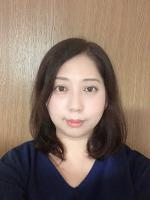The manga and anime series Demon Slayer: Kimetsu no Yaiba has become a social phenomenon in Japan and English translations have also been widely distributed overseas. Researcher UE Akiko (Research Institute for Promoting Intercultural Studies; PROMIS) continues to publish a series of articles analyzing the main characters on the news and media website AERA dot, which have received an impressive number of hits (over 4 million). She specializes in researching myths, legends (e.g. German sage) and Germanic folklore and is particularly well-versed in tales, superstitions and legends concerning the strange and mysterious. We asked her about the significance of applying mythology research methods to the analysis of current pop culture and what can be discovered through this process.
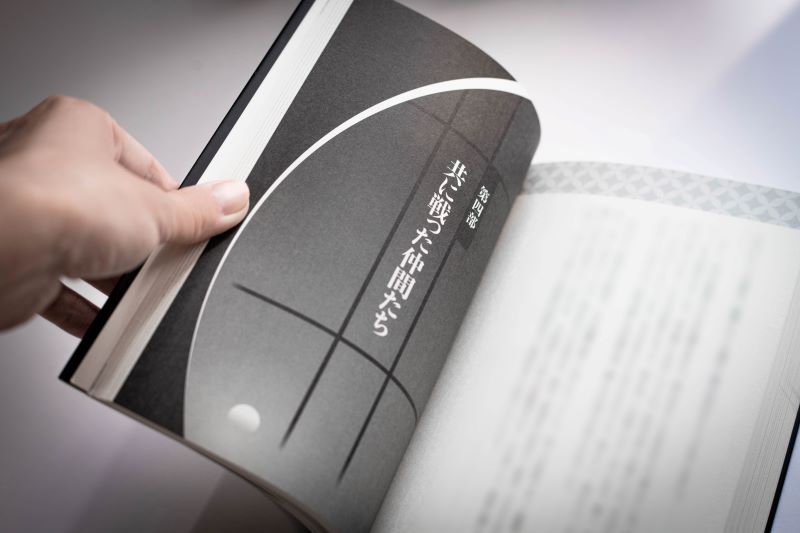
Exploring the processes by which uncertain mysterious phenomena are inherited as fact
What is your main area of research?
My specialization is 19th century Germanic folklore and I am conducting research that encompasses folklore studies and literature. In particular, the main focus of my research is the three major works by the Brothers Grimm; which are Grimms Märchen (Grimms’ Fairytales), Deutsche Sagen (German Legends) and Deutsche Mythologie (Teutonic Mythology), the latter of which was compiled by the older brother Jacob.
Within this, I would say that even within the Brothers Grimm my specialization is anthologies of legends. In legends, real place names appear and some of the characters are real people, so there is a strong overlap with historical fact. However, in many cases only fragments remain, so they are not fully developed stories. It is precisely for that reason that they are important materials for researchers because they are considered unadulterated.
Why did you decide to research German folklore?
When I was a student, I became interested in a story from Uji Shui Monogatari (a 13th century collection of Japanese tales) about the discovery of a corpse that hasn’t decayed. While searching for this particular story, I stumbled across an anthology of German legends. From this point onwards, the relationship between the supernatural and the corporeal became one of my research topics. For example, there are supernatural beings that have a body, such as demons, and those who don’t, such as ghosts.
If something has a body then it makes sense that there would be accounts about sightings. It should be impossible to really see ghosts and other creatures that don’t have a body. So I am intrigued as to why so many people witnessed similar things and why these narratives have much in common. I term mysterious phenomena in these stories ‘怪異’ ( ‘kaii’ ‘supernatural’), and those who cause these supernatural happenings ‘怪異体‘(‘kaiitai’ ‘supernatural beings’). Gods and Buddha are also included in this definition, so I may get told off (laughs)!
You are also conducting interview surveys on folklore?
I am carrying out interviews but my main focus is conducting research on narrative conventions by analysing the story within the writing. Within writings that are a record of what the author heard from the storyteller, I analyze the characteristics of the flow of the narrative. From this it is possible to pick out where the storyteller’s misunderstandings or dreams, or even their own visions and ideas are mixed into the narrative. It is possible to analyze whether or not these aspects were intentionally added.
Whether what is written down is true or not is very important for me. In my research, I ask ‘What elements can we use to verify things that are unconfirmed, such as the supernatural?’ and ‘What sort of elements should be included for the text to be inherited as fact?’ Therefore, I would say that my research is predominantly research into literary texts, as opposed to interview surveys.
How exactly do you analyze texts?
All elements that appear in a story or written passage, for example ‘night’, ‘hill road’, ‘funeral’ and ‘light’ etc. are called motifs. When the combination of motifs or how the motifs are linked together is unnatural, it can be inferred that the text has inconsistencies such as dreams or fabrication that were added in. From this, it is possible to ascertain whether the level of facticity is high or low. Despite finding combinations of motifs that I haven’t encountered before, I get excited when I come across a text that can be judged to have a high level of facticity.
The Demon Slayer character analysis series has been accessed over 4 million times
What made you decide to start writing about Demon Slayer: Kimetsu no Yaiba?
A while ago, I started up a Kobe University research group on folklore and legends with two other people in the Research Center for Promoting Intercultural Studies. Our group is called Shinshinshin for short* (*this is a pun on the kanji character 神 which is the first character in both 神戸 (Kobe), myth (神話)) and mythology research group (神話学研究会). We conduct collaborative research into the connections between pop culture and mythology.
I was already interested in Demon Slayer but when it became really popular, many negative articles appeared in magazines and on the internet about the series. For example, misguided criticisms linking the way that the young main characters are not afraid to throw away their lives and fight to the romanticization of the kamikaze attacks during World War 2. Upon re-examining the story, I came to the conclusion that this series does not have such a political meaning nor does it glorify war, so it is my own incentive to communicate my opinion to readers.
So, you became a writer for AERA dot.?
I had asked a number of media companies if I could write about Demon Slayer for them. The editor at AERA dot understands my desire to turn the focus back on the manga itself and allows me to write freely. By this, I don’t mean that I suddenly started writing a critique of the political interpretations of Demon Slayer; rather I began with character analyses. Then after a number of my articles had been published, I presented my interpretation that Demon Slayer does not glorify war.
How was the series of articles received?
The predicted number of page views for such internet media articles is generally 1 million. However, the very first article exceeded 1 million views and subsequent articles in the series also received this level of response. As I developed this irregular serial, more and more people learned that I was writing about Demon Slayer and my articles continued to receive an unusually high level of views.
When the second series of the anime was first broadcast, I started to receive between 2 million to 4 million hits. Each article has a comments section where many readers leave comments and I read them all.
Searching myths for people’s ideals and ideas of salvation
Are popular culture, myths and legends normally researched side by side like this?
The original definition of ‘mythology’ (神話) is ‘tales of the gods’. The mythology genre of literature also includes legends about heroes. In myths and legends there is a common theme of saving something or someone, be it a country, a land, a specific group, or children. Therefore, there are many researchers who consider that works of fiction that contain a hero character can also be considered a kind of myth. However, there is a divide between researchers who approach mythology as being closely related to history, and those researchers who do not.
I think the fact that the field of mythology is so extensive and broad-ranging is a feature of recent research in this area. For example, conducting mythology research from the perspective of social studies or intellectual history, or looking at mythology through anime, manga or film studies. It is very refreshing when research on mythology advances through various mediums and fields and the conclusions come together.
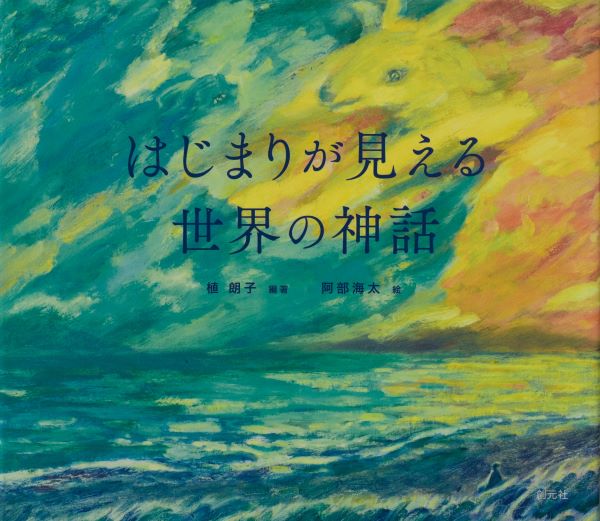
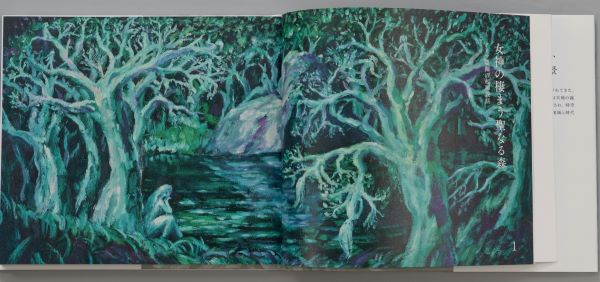
Researcher Ue has edited an anthology of creation myths called ‘See the beginning from world myths’. Alongside illustrations by ABE Kaita, 20 experts introduce myths about the world’s beginning.
How does your research on Demon Slayer link back into your specialization in researching mythology and the supernatural?
A clear motif is the requirements to defeat a demon in Demon Slayer. For example, demons can only be defeated with a Nichirin Blade, which absorbs sunlight and the characters use a wisteria-based poison to weaken them. This aspect of using resources from the natural world and drawing upon strength found in nature is present in ancient myths and legends. In addition, many of the main characters are children who don’t have any parents and this mirrors one of the common traits of heroes in legends.
What understanding can you gain from the commonalities between stories written by modern authors and ancient myths?
I think we can get closer to answering questions such as ‘What did people of that time find aspirational?’ and ‘What did they want to be saved from?” Of course, the themes vary depending on the work but it is possible to find commonalities between them that are related to the period. I think that what people want from mythology is some kind of ideal or rescue: ‘I want to be like that.’ or ‘I want to be saved like that’.
You have been analyzing works by modern authors to discover what people’s wants and ideals are today. Could you tell us about your upcoming research activities?
Now, I am researching myths about plants. This is also related to the body. Based on research conducted by a history of medicine research center in Germany, I am looking at old superstitious beliefs about consuming certain plants to cure certain illnesses, and the actual medicinal plants that were used. In my research, I am focusing on plants that actually have a medicinal effect as well as those that have myth-like stories about them. In comparing fairytales with scientific documents, I am maintaining scientific accuracy so as not to mislead regarding the medicinal effects of these plants.
In relation to pop culture, an academic symposium on the creation of myth-like stories in the manga/anime series JoJo’s Bizarre Adventure and Demon Slayer: Kimetsu no Yaiba was recently hosted by PROMIS on February 27, 2022. I was happy that the event was attended by members of the public, including fans of both series.
Note: this article is also available as a PDF in Vol. 12 of the Kobe University Newsletter "Kaze" (April 2022).
Kimetsu no Yawa
Analyzing Demon Slayer through essays on its characters
Research Ue’s Demon Slayer: Kimetsu no Yaiba character analysis essays, which have been published on AERA dot. since December 2020, are now available in book format. Trending on social media when it was published, this book contains improved versions of articles from the popular serial that have been highly evaluated by fans of Demon Slayer, as well as some new character analyses. It reveals hidden aspects behind the characters’ dialogues and behaviour. (Published by Fusosha, 1500yen (plus tax))
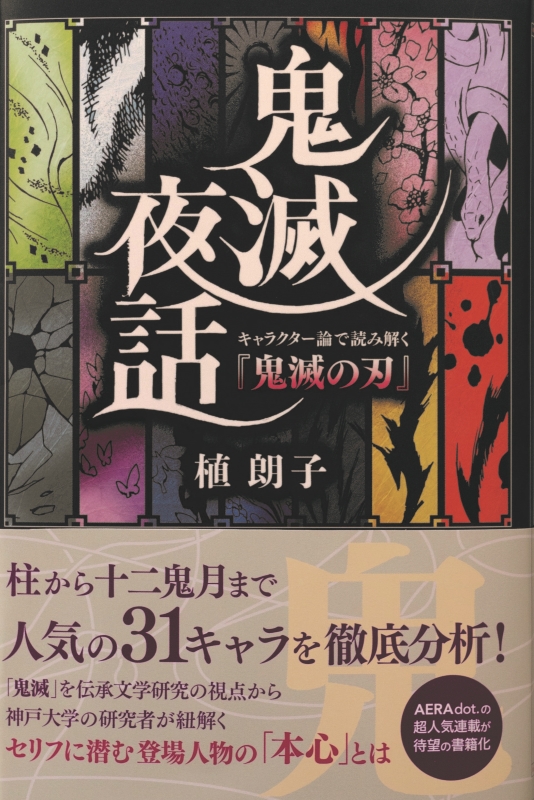
Interviewee Profile:
Researcher UE Akiko (Research Institute for Promoting Intercultural Studies; PROMIS)
Born in Shingu City in Wakayama Prefecture, she obtained her bachelors in Japanese language and Japanese culture from the Faculty of Literature at Osaka City University, going on to obtain her master’s at the same university’s Graduate School of Literature. Subsequently she completed her PhD. at Kobe University’s Graduate School of Intercultural Studies. In 2016, she was awarded the Sumisei Woman Researcher Encouragement Prize, which aims to support female researchers with child rearing. Her areas of specialization include Germanic folklore, legends (e.g. German sage), mythology and botanical folklore She has an irregular serialized column on Japanese popular culture, which is published on the website of the Japanese-language magazine ‘AERA’ (AERA dot.)

